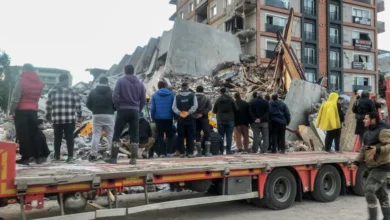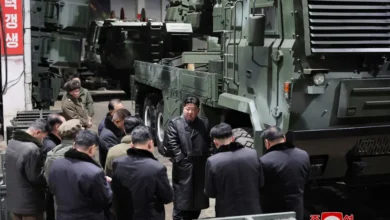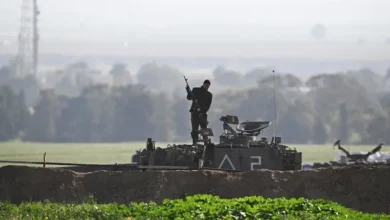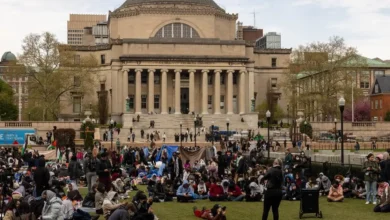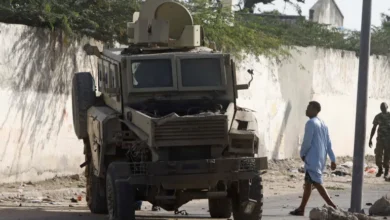Global push for Palestinian statehood renews debate over two-state solution

A growing number of countries announcing plans to recognize a Palestinian state has stirred once again the debate over a two-state solution to end the Israeli-Palestinian conflict.
An independent Palestinian state living in peace side by side with Israel is the only way to end the decades-long conflict and the ongoing Israel-Hamas war, a Two-State Solution Conference held in New York, said in a statement.
This is the idea of bringing peace through the establishment of a Palestinian state alongside Israel in territory Israel captured in the 1967 six-day war. But it has long faced obstacles which have only grown with time.
These include increasing Jewish settlements in the occupied West Bank, primary issues including borders, the fate of Palestinian refugees and the status of Jerusalem.
What is a two-state solution?
The two-state solution, proposed by the Oslo Accords, was born out of a series of historical events. After the fall of the Ottoman Empire, Jews – seeking refuge from European antisemitism and claiming biblical ties to the land – and local Arab population, both claimed the right to self-determination in historical Palestine.
When conflict broke out between the two groups, the UN proposed partitioning the territory into separate Jewish and Arab states. Jerusalem would remain under international control according to the proposition. Jewish leaders accepted the plan, which gave them 56 percent of the land. The Arab League rejected it.
On May 14, 1948, Israel declared independence. The next day, five Arab nations launched an attack with forces from Egypt, Jordan, Iraq, Syria and Lebanon. By the end of the war, Israel took control of 77 percent of the territory. The war until today is remembered as “the Nakba” meaning catastrophe because of the mass displacement of Palestinians and many becoming refugees in neighboring countries and Palestinian territories.
Then in the 1967 six-day war, Israel seized the West Bank, including East Jerusalem, from Jordan and Gaza from Egypt.
Today, 3.5 million Palestinians live as refugees in the region, 5.5 million reside in territories occupied by Israel since 1967, and 2 million are Israeli citizens. Despite recognition from 147 UN member states, Palestine is not a full UN member, leaving most Palestinians without recognized statehood.
What would Palestine look like under the two-state solution?
Advocates of the two-state solution have proposed establishing a Palestinian state comprising the Gaza Strip and the West Bank, connected by a land corridor running through Israel.
About 20 years ago, former Israeli and Palestinian negotiators outlined a detailed plan known as the Geneva Accord. The proposal included mutual recognition of West Jerusalem’s Jewish areas as Israel’s capital and East Jerusalem’s Arab areas as the capital of Palestine. It also envisioned a demilitarized Palestinian state.

Under the plan, Israel would formally annex major settlement blocs while exchanging other land, and Israeli settlers living in areas designated as part of the future Palestinian state would be relocated.
What does recognizing an independent Palestinian state mean?
Recognition of a state is only symbolic, but it sends a clear message about the international community’s standing on the Israeli Palestinian conflict.
The world recognizing a Palestinian state would mean that a “rising proportion of the international community wants to see commitment to a national future for the Palestinians, and that even Israel’s closest allies believe that is more in Israel’s own interests than a future of war on all sides,” writes Bronwen Maddox, Director and Chief Executive of UK think tank Chatham House.
While dozens of countries have recognized a Palestinians’ right to statehood and major western powers such as France and Canada announced plans to do so at the UN General Assembly in September, its impact remains to be seen.
Meanwhile, the UK has said it will do so in September unless Israel takes steps to ease the humanitarian crisis in Gaza and commit to a peace process.
Even so, their recognition would mark a significant accomplishment for the Palestinians, who believe it confers international legitimacy on their struggle.
Although 147 of the 193 UN member states already recognize Palestine as a state, it is not itself a UN member, meaning most Palestinians are not recognized by the world body as citizens of any state.
The UN General Assembly approved the de facto recognition of a sovereign state of Palestine in November 2012 by upgrading the Palestinians’ observer status at the world body to “non-member state” from “entity.”
Is a two-state solution possible?
Israeli Prime Minister Benjamin Netanyahu leads the most right-wing government in the country’s history, which includes religious nationalist factions backed by settler communities. One of its key figures, far-right Finance Minister Bezalel Smotrich, has openly denied the existence of a Palestinian people.
On July 7, Netanyahu stated he seeks peace with the Palestinians but argued that an independent Palestinian state could threaten Israel’s security, insisting that Israel must retain overall security control.
Israel also condemned France, UK and Canada for announcing their intentions to recognize a Palestinian state soon.
The country’s foreign ministry said in a post on X: “The shift in the British Government’s position at this time, following the French move and internal political pressures, constitutes a reward for Hamas and harms efforts to achieve a ceasefire in Gaza and a framework for the release of hostages.”
Netanyahu has strongly condemned France, saying recognizing a Palestinian state now would be a “launch pad to annihilate Israel – not to live in peace beside it.”
The United States, Israel’s closest ally, has brushed off the European push on Palestinian recognition. President Donald Trump’s administration boycotted the Two-State Conference.
Meanwhile, there are several criteria under the Montevideo Convention of 1933 before Palestine can be recognized as a sovereign state under international law.
The process requires a state to have a permanent population, a clearly defined geographical region with established boundaries, a functioning government capable of enforcing laws, and the capacity to establish diplomatic ties and uphold international relations with other sovereign states.
